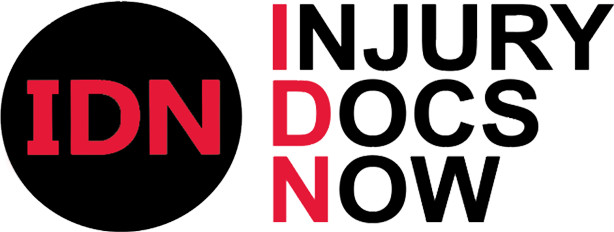
Pain management is a critical aspect of recovery for injury patients, involving a spectrum of strategies that target both the symptoms and underlying causes of pain. With advancements in medical technology and methodology, there are now more options than ever to help patients manage their pain effectively, especially for those recovering from significant injuries such as traumatic brain injuries or those involved in motor vehicle accidents.
The Evolution of Pain Management Techniques
Pain management has evolved from basic medication-driven approaches to comprehensive plans incorporating medical and non-medical strategies. Today, pain management for injury patients involves a multidisciplinary approach, utilizing a team of healthcare professionals to address various aspects of the patient’s pain and recovery process. This team often includes physicians, nurses, physical therapists, psychologists, and other specialized healthcare providers.

Key Advances in Pain Management Techniques
-
Precision Medicine in Pain Management
Advancements in precision medicine have allowed for more personalized approaches to pain management. By understanding the genetic, environmental, and lifestyle factors that influence pain perception and recovery, healthcare providers can tailor treatments to suit individual patients better needs. This can range from selecting the most appropriate pain medication with minimal side effects to choosing specific physical therapy exercises that maximize recovery.
-
Integration of Technology in Treatment Plans
Modern pain management often includes the use of cutting-edge technologies. For example, CT scans and other imaging technologies provide detailed images of the internal body, helping doctors diagnose issues more accurately and monitor the effectiveness of treatments. Wearable technology can also track patient progress in real-time, providing data that can be used to adjust treatment plans promptly.
-
Enhanced Drug Delivery Systems
The development of advanced drug delivery systems has significantly improved the efficiency of pain management medications. Techniques such as targeted drug delivery can direct medication directly to the area of pain, reducing the overall dosage required and minimizing systemic side effects. This is particularly beneficial for patients with chronic pain conditions or those recovering from surgeries.
-
Cognitive Behavioral Therapy (CBT)
CBT is increasingly recognized as an effective management technique for helping patients cope with the psychological aspects of chronic pain. By changing the way patients perceive their pain, CBT can help reduce stress and improve coping strategies, which are critical in managing long-term pain conditions.
-
Physical Therapy and Rehabilitation
Advancements in physical therapy techniques are critical in pain management, especially for injury patients. Tailored rehabilitation programs focusing on restoring function and range of motion can significantly help manage pain. Techniques such as ultrasound therapy, manual therapy, and strength training enhance blood flow to injured areas, reduce pain, and promote healing.
-
Multimodal Pain Management Approaches
This approach combines various pain management techniques to address different aspects of pain. For instance, combining medication, physical therapy, and psychological counseling can provide comprehensive care that addresses both the physical and emotional aspects of pain. This holistic approach is convenient for patients with complex pain conditions like those resulting from a traumatic brain injury or spinal cord injury.
Implementing Effective Pain Management Strategies
For successful pain management, healthcare teams must possess strong communication skills and emotional intelligence to understand and respond to their patients’ needs effectively. Regular performance reviews and professional development opportunities can help ensure team members stay knowledgeable about the latest advances in pain management.
Management Skills in Healthcare Settings
Successfully managing a team in a healthcare setting requires clear communication and effective management techniques. Ensuring your team is well-coordinated and each member understands their role in the pain management process is crucial. This involves regular training and updates on the latest pain management, including protocols and new technologies.
Patient Education and Involvement
Educating patients about their conditions and the available treatment options is a cornerstone of modern pain management. This process empowers patients to actively participate in their recovery, fostering a partnership between the patient and the healthcare provider. By fully understanding their condition, patients can make informed decisions about their treatment plans and become proactive participants in their care.
Effective management necessitates that patients comprehend the specifics of when and how to apply various recovery techniques, such as the correct use of ice packs, the timing, and dosage of medications, or the proper execution of prescribed physical therapy exercises. Moreover, understanding the reasons behind each treatment can motivate patients to adhere to their therapy schedules and make necessary lifestyle adjustments. For instance, explaining how specific exercises can strengthen muscles and prevent future injuries or how maintaining good posture can alleviate chronic pain helps patients visualize the benefits of their efforts.
Furthermore, educational interventions can include workshops, illustrated handouts, and digital content, such as instructional videos, enhancing understanding and engagement. Regular discussions and feedback sessions can also ensure that patients are correctly applying what they’ve learned and allow for adjustments in treatment as necessary. Overall, an informed patient is more likely to achieve successful outcomes, experience less anxiety about their condition, and feel more in control of their health.

Frequently Asked Questions:
What role does diet play in pain management for injury patients?
Nutrition plays a pivotal role in recovery and pain management. An anti-inflammatory diet rich in omega-3 fatty acids, antioxidants, vitamins, and minerals can significantly enhance the body’s natural ability to heal and reduce inflammation. Foods like leafy greens, berries, fatty fish, nuts, and seeds are beneficial. Additionally, maintaining adequate hydration and avoiding pro-inflammatory foods such as refined sugars and trans fats can further aid in managing inflammation and pain.
Can alternative therapies be part of pain management for injury patients?
Alternatively, therapies can be vital components of a comprehensive pain management strategy. Acupuncture, for instance, stimulates the nervous system and can help relieve pain by releasing endorphins and improving blood circulation. Massage therapy can reduce muscle tension and alleviate stress. At the same time, biofeedback teaches patients to control bodily processes that are typically involuntary, such as muscle tension and heart rate, which can help manage pain sensations. Integrating these therapies with conventional medical treatments often leads to better pain control and more satisfactory recovery outcomes.
How does stress affect pain management for injury patients?
Stress has a significant impact on both the perception of pain and the healing process. High stress levels can intensify pain sensations and hinder recovery by affecting sleep patterns and increasing muscle tension. Effective stress management techniques, such as practicing mindfulness, meditation, and relaxation exercises, are essential components of pain management protocols. These practices not only help in reducing stress but also aid in lowering the body’s overall pain response, facilitating a more effective healing process.
What is interventional pain management, and how is it used for injury patients?
Interventional pain management is a specialized area within pain management that focuses on specific techniques to directly target the sources of pain. This approach can include the use of nerve block injections, epidural steroid injections, and radiofrequency ablations, which are procedures designed to reduce pain significantly at the source. These treatments benefit patients not responding well to traditional pain management strategies. By directly addressing the anatomical origins of pain, interventional techniques can provide substantial relief and are an essential option in the toolkit for managing chronic pain conditions or severe injuries.
Are there any new pharmaceuticals on the horizon for pain management?
The pharmaceutical industry continually develops new drugs to improve pain management. Recent research has focused on creating medications that target specific pathways involved in pain signaling without the addictive potential or side effects associated with opioids. For example, new non-opioid medications that modulate pain receptors or inflammatory responses offer promising alternatives for those needing long-term pain management solutions. These advancements in pharmacology are crucial as they provide safer and more effective options for managing pain.
How do psychological factors influence pain management outcomes?
Psychological factors such as emotional state, anxiety levels, and mental health conditions can profoundly impact how an individual experiences pain. Negative emotional states can amplify pain perception, making pain management more challenging. Conversely, a positive outlook and good mental health can improve pain outcomes. Psychological interventions, such as cognitive-behavioral therapy (CBT), can be highly effective in altering maladaptive thoughts and behaviors related to pain, teaching patients coping strategies to manage their pain better.
What are the benefits of a multidisciplinary approach to pain management?
Employing a multidisciplinary approach to pain management involves collaboration among various healthcare providers, including physicians, physical therapists, psychologists, and dietitians. This approach allows for a more personalized and effective treatment plan that addresses not only the physical aspects of pain but also the psychological and lifestyle factors that can influence recovery. The synergy between different specialties ensures that all underlying causes of pain are addressed, leading to improved patient outcomes, more comprehensive care, and enhanced patient satisfaction.
A New Era of Pain Management
The field of pain management is entering a new era characterized by an integrated, patient-centered approach that uses the latest advancements in medicine and technology. For injury patients, these developments offer hope for more effective relief from pain and faster, more comprehensive recoveries. Healthcare providers must continue to evolve, embracing new techniques and technologies to improve their ability to manage pain and enhance their patients’ overall quality of life. As the field progresses, the focus remains on delivering personalized, effective pain management strategies that address all facets of the patient’s health and well-being.
InjuryDocsNow plays a pivotal role in the evolving landscape of pain management by providing a comprehensive directory of experienced healthcare professionals specializing in the latest pain management techniques. This platform ensures that injury patients have access to top-tier medical experts with the knowledge and tools to implement these advanced pain relief strategies. Whether patients require a physical therapist for rehabilitation exercises, a specialist for interventional pain management, or a physician skilled in the latest pharmaceutical treatments, InjuryDocsNow serves as a crucial connector. By facilitating easy access to a diverse range of pain management professionals, InjuryDocsNow not only enhances the quality of care available but also supports patients on their journey to recovery, helping them regain their quality of life more efficiently and effectively.
Visit Injury Docs Now today to find the right doctor and get the care and support you need for both your recovery and legal success.









































